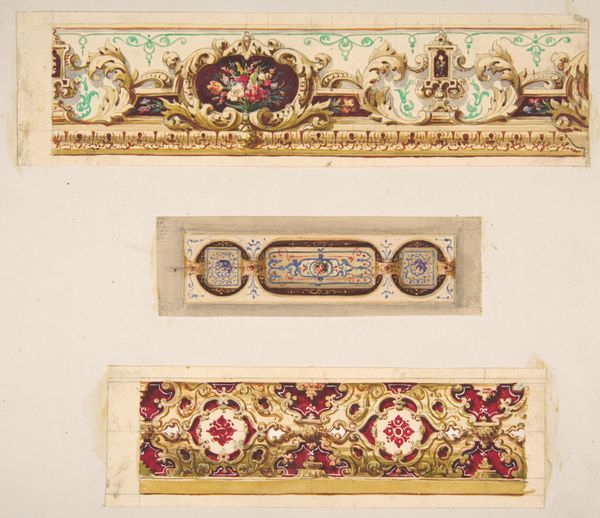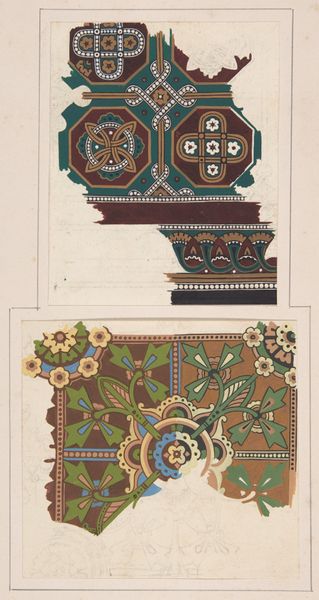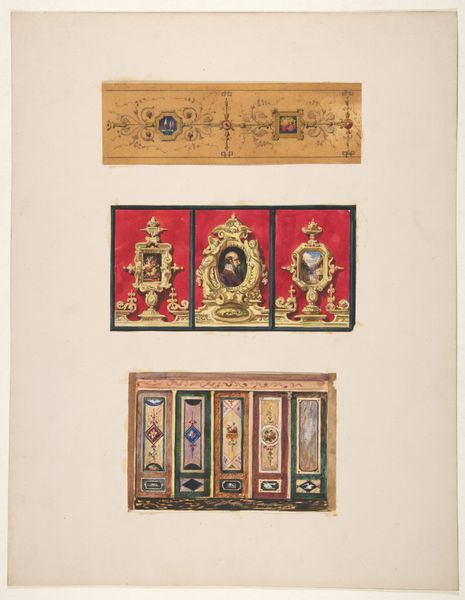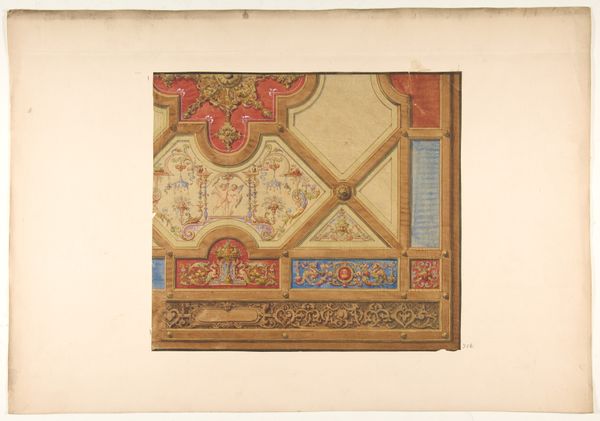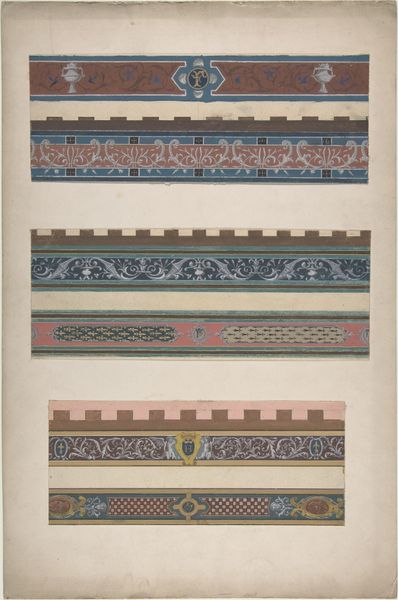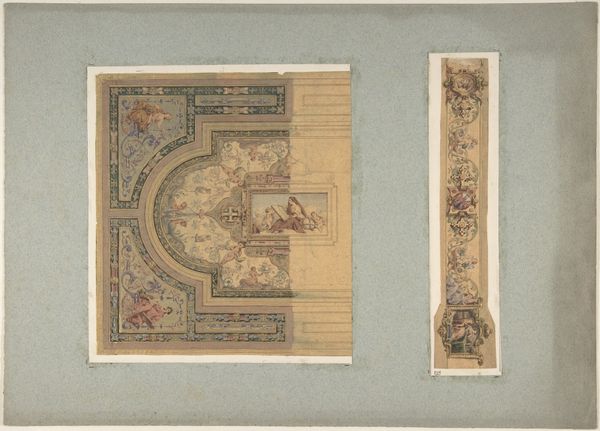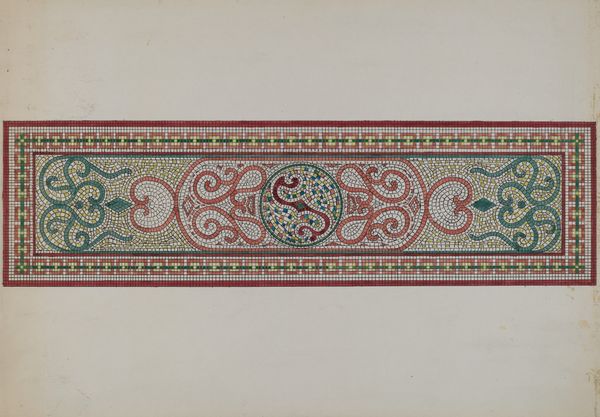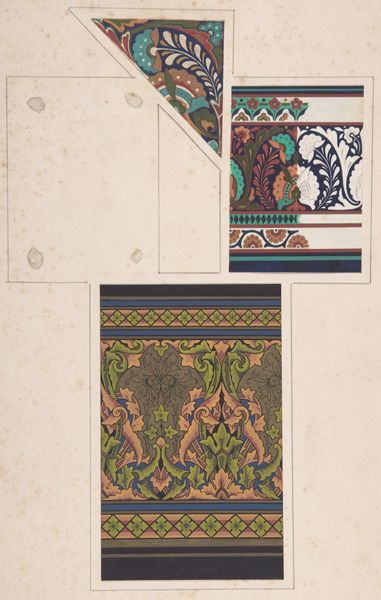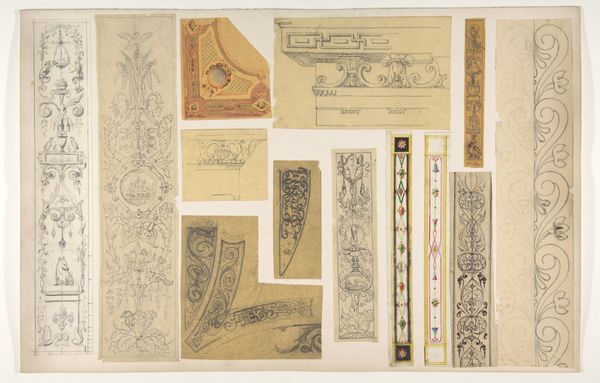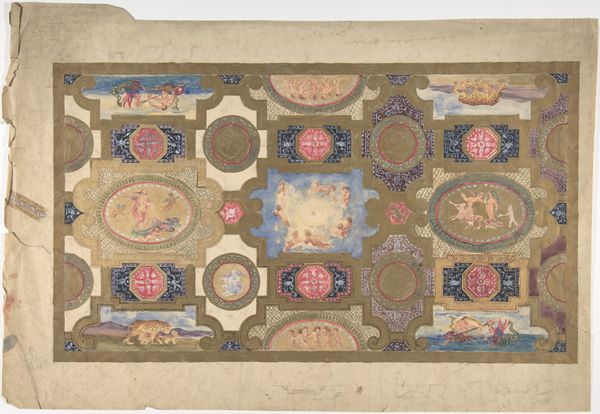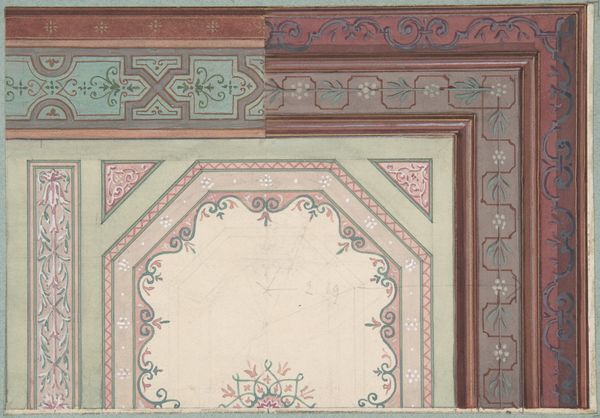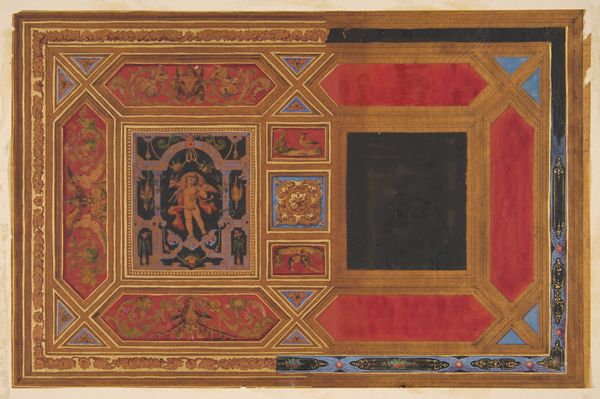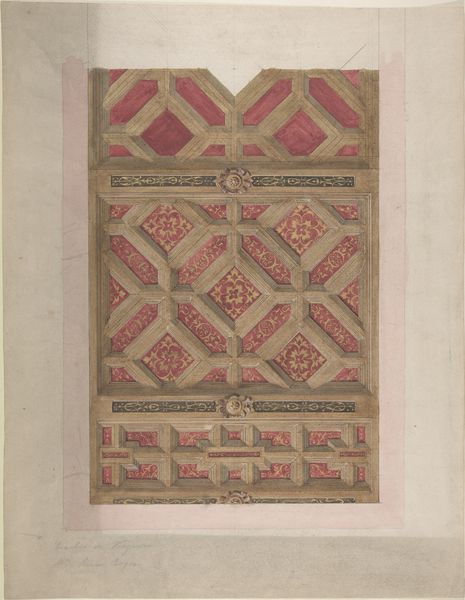
Four designs for painted borders to decorate a room 1820 - 1897
0:00
0:00
Copyright: Public Domain
Jules-Edmond-Charles Lachaise made these four watercolor designs for painted borders to decorate a room. These designs present an interesting case study of the social life of art. In France, during the late 19th and early 20th centuries, interior design became a symbol of social status and national identity. The upper classes sought ways to display their refinement and wealth. The French state, at the same time, attempted to revive its luxury industries after periods of conflict and instability. Lachaise's designs borrow imagery from classical and rococo traditions, full of floral and ornamental motifs. One design features a cherubic figure reminiscent of traditional European art. The borders probably targeted wealthy patrons looking to evoke a sense of historical grandeur in their homes. These images reflect not only aesthetic preferences but also the socio-economic structures of the time. To fully understand this artwork, we might consult historical records of interior design trends, economic data on the luxury goods market, and critical analyses of French national identity during this period. Art's meaning is always contingent on its social and institutional context.
Comments
No comments
Be the first to comment and join the conversation on the ultimate creative platform.
